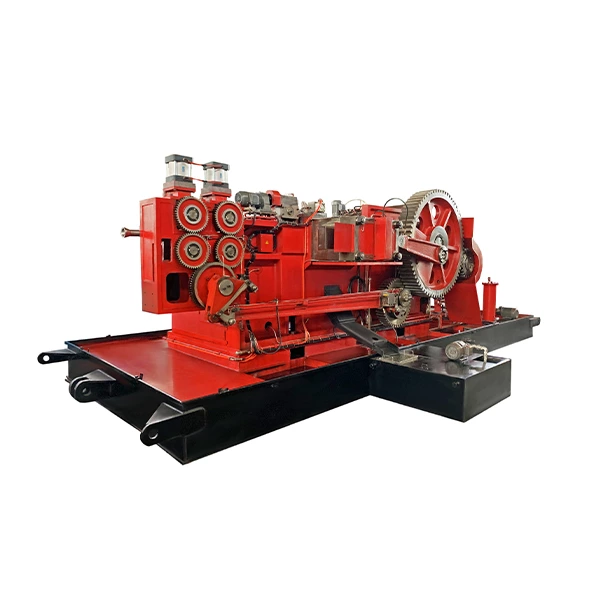The Key To Improving The Production Efficiency Of Cold Heading Machines
heading machine are crucial pieces of equipment in many manufacturing industries, particularly in the production of automotive, electronics, and mechanical parts. However, as the machine is used over time, it may experience various issues that affect production efficiency and product quality. Timely identification and troubleshooting of these problems can ensure the machine operates normally and prevent production losses caused by downtime. This article will discuss common cold header machine faults and their troubleshooting methods, helping operators improve equipment reliability and production efficiency.
1. Common Cold Header Machine Faults
1. Machine Won't Start
Cause: Power supply issues, blown fuses, or control circuit failure.
Solution: First, check the power connection of the heading machine price and make sure the power switch is in the "on" position. If the power is normal, check whether the fuse is blown and replace it if necessary. If the machine still does not start, check the control circuit to ensure that the control system and relay are working properly.
2. Excessive Machine Vibration
Cause: Loose or worn-out machine components, or improper alignment of the punch and die.
Solution: Inspect the components of the bolt forging machine machine, particularly the punch, die, and their supporting components, to ensure they are securely fastened and aligned. If any components are loose or worn, tighten or replace them as needed. Also, check the alignment of the punch and die to ensure they are properly positioned, which can help reduce vibration.
3. Abnormal Noise During Production
Cause: Insufficient lubrication, component wear, or incorrect pressure settings.
Solution: Check the lubrication system to ensure all friction parts are adequately lubricated. If the lubricant is old or insufficient, replace it. If any components are worn, replace them as needed. Also, check the pressure settings to ensure they meet the production requirements.
4. Inaccurate Part Dimensions
Cause: Worn-out dies, incorrect pressure settings, or unstable feeding.
Solution: Inspect the dies for signs of wear. If the dies are severely worn or deformed, replace them. Check the pressure settings to ensure they meet the production specifications. Finally, examine the feeding system to ensure stable material feeding to avoid affecting the dimensional accuracy of the parts.
5. Automatic Shutdown
Cause: Overload, excessive temperature, or electrical control system failure.
Solution: First, check whether the bolt former has shut down due to overload. If so, reduce the load and avoid prolonged high-load operation. Check the cooling system to ensure that the temperature is within the normal range. If the temperature is too high, check the cooling water circuit and heat dissipation system. Finally, check the electrical control system to ensure there are no errors in the control program that could cause the shutdown.
2. Preventative Measures for Fault Troubleshooting
1. Regular Maintenance: Perform comprehensive checks and maintenance on the cold header machine regularly. Clean the lubrication system, check the electrical circuits, and inspect mechanical components for wear to ensure the machine is in optimal working condition.
2. Operator Training: Operators should receive professional training to understand the cold header machine’s structure, working principles, and common troubleshooting methods. This knowledge helps them quickly take effective action when faults occur.
3. Fault Recording and Analysis: After every fault, record the cause and troubleshooting process in detail. By analyzing historical faults, potential issues with the machine can be identified and repaired in advance.
3. Conclusion
The bolt former machine is an essential component on the production line, and its operating condition directly impacts production efficiency and product quality. Understanding common malfunction causes and troubleshooting methods helps operators respond quickly to issues and minimize downtime. Regular maintenance and good equipment management can effectively prevent malfunctions and ensure the long-term, efficient operation of the bolt maker machine. By taking these measures, companies can improve production efficiency, reduce maintenance costs, and enhance overall productivity.

 English
English اللغة العربية
اللغة العربية Español
Español Português
Português Русский
Русский  Türkçe
Türkçe